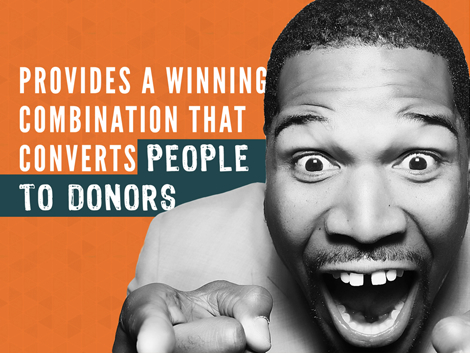Humans are a visual species. We like watching the sunset. We like watching the sunrise. We like looking at the stars and we like spotting a bright rainbow. We like how the leaves of trees change to bright reds, oranges and yellows in the fall. In short, we like beautiful things. We appreciate beauty. And there are few things uglier than a presentation full of bullet points and text. Use visuals. Use them often and use them well. The world will be a more beautiful place because of it.
Simplicity is key. Remember Einstein’s words: If you can’t explain it simply, you don’t understand it well enough. Simplify your presentation’s content as much as possible, and do the same visually. Use big visuals and few words. Your audience is there to hear you speak. They didn’t come to read a bunch of slides and occasionally listen to what that person at the front is saying. Use more slides and less text. There’s no need for a text-heavy slide if you’re at the front explaining what the slide says. You know your material better than a slide with five bullet points. And you’re much more interesting.
If your presentation is much too dense, try simplifying it by limiting yourself to one word per slide until you have all your main points laid out. Then work to flesh out exactly what you want to say to your audience, and add words to slides only when they are absolutely essential. Spend a significant, thoughtful amount of time figuring out what images will tell your story the best.
Your visuals should compliment your presentation, not overshadow or underwhelm it. Never make the audience spend time reading a slide and don’t make them search for the meaning of the slide. The visual should flow seamlessly with the words you’re speaking. It should offer something new, yet expected. It should be powerful, but not distracting. It should be compelling, but not overwhelming. Keep graphs and charts as simple as possible with as few words as possible. As the presenter, you are responsible for doing the explaining. You’re Batman. Your slides are Robin. Everyone needs a great sidekick, but in the end, you’re running the show.
Details matter with your visuals. Make sure you have a cohesive, clear look and feel that runs through the entire presentation. It’s always effective to end where you began, to bring everything full circle, so keep that in mind when organizing. Fonts matter. A bulky san serif gives off an entirely different feel than an italicized serif. Colors matter. Reds, yellows, and oranges are much different than blues, purples and greens. They evoke different emotions and have a wide variety of connotations. The images, illustrations and graphics you choose should be indicative of your presentation’s overall feel. Are you looking to elicit feelings of sophistication? diversity? intelligence? humor? All aspects of your presentation’s design should elicit the feelings you want to convey.
Perhaps most importantly, be creative with your visuals. Don’t be afraid to think outside the box. How could you display that information more excitingly? What other way could you effectively present that graph? Could you incorporate sketching or drawing in your presentation? Would music or a video clip nuance the complexity of your argument? What other visuals would compliment and intensify the material you are presenting? The impact of using effective visuals should not be overlooked. We’re a visual people. If you show us and tell us, we’ll be much more likely to be excited about your presentation and believe in what you’re telling us.



